Drive: Toyota Celica TA22 ST
Exactly 50 years ago, in October 1970, the model history of a sporty coupé named Celica began at Toyota. At that time, the Japanese car brand had only just begun exporting its model range to other countries like Germany. Therefore it took about a year until the first Celicas arrived in Europe. Meanwhile, motorsports enthusiasts were already achieving their first successes on the circuits and on rally tracks. One of them was Ove Andersson from Sweden, who finally set up his own rally team across the road from Toyota Deutschland and renamed it ‘Toyota Team Europe’ (TTE). The first Celica generation established the reputation of this team, which later became the factory racing team and was renamed to ‘Toyota Motorsport GmbH’ and finally to ‘Gazoo Racing Team’. At the same time, it was also this sporty coupé that gave Toyota a new image worldwide, which now included sportiness in addition to reliability and affordable products. Over seven model generations, more than 4.1 million units of the Celica were produced, and the car also won a total of six rally world championship titles.
Just in time for the 50th anniversary of this sports coupé, the Secret Classics team now had the opportunity to get to know the original model TA22 in detail. The model name Celica is derived from the Spanish word ‘celestial’, which means ‘heavenly’. When looking at the technical data of the classic car, which was provided to us by the Toyota Collection in Cologne, Germany, the question arises, if the Japanese brand once exaggerated a little bit. The 1973 Celica ST with its turquoise paint finish produces only 63 kW/86 hp from four cylinders and 1.6 liters of displacement. However, this power was already transmitted to the rear wheels as standard via a manual five-speed gearbox, which was by no means normal in the automotive world at that time. Parallel to this, there was the Celica LT with 55 kW/75 hp (optionally also available with a three-speed automatic) and from 1972 the Celica GT with 74 kW/101 hp. Thanks to its high-revving engine and a sophisticated chassis with independent front suspension with MacPherson struts and a four-link rear axle in conjunction with an unladen weight of between 890 and 1,200 kilograms, the Celica was absolutely thrilling on the road – and still is today.




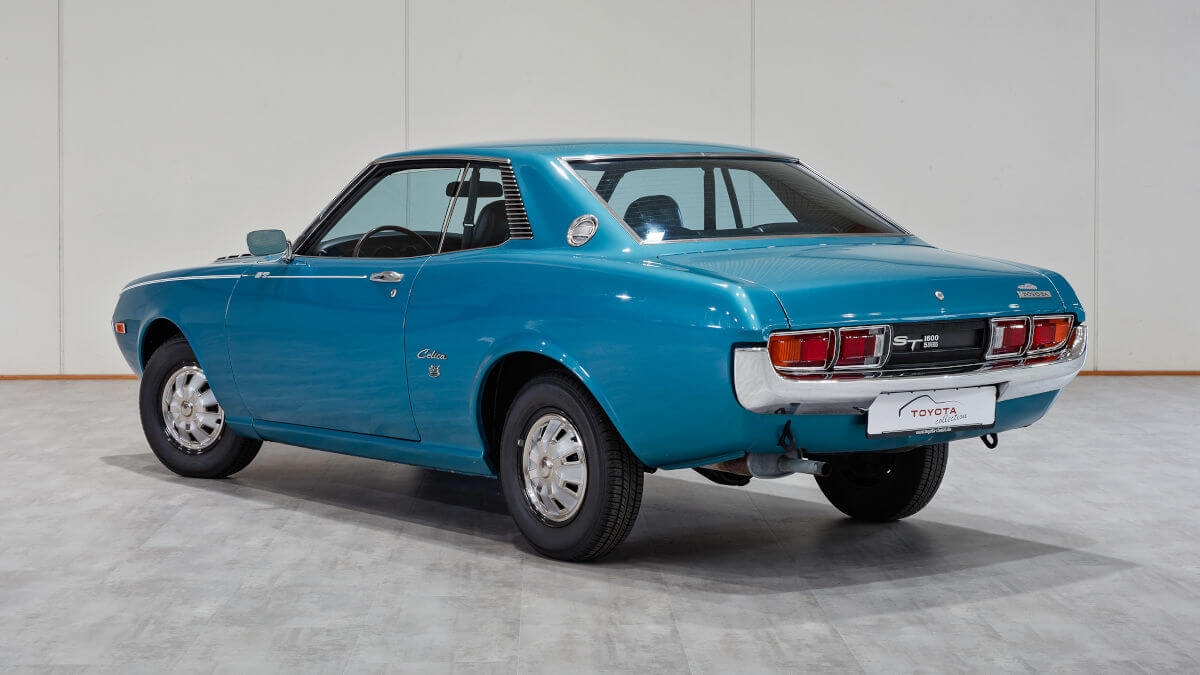















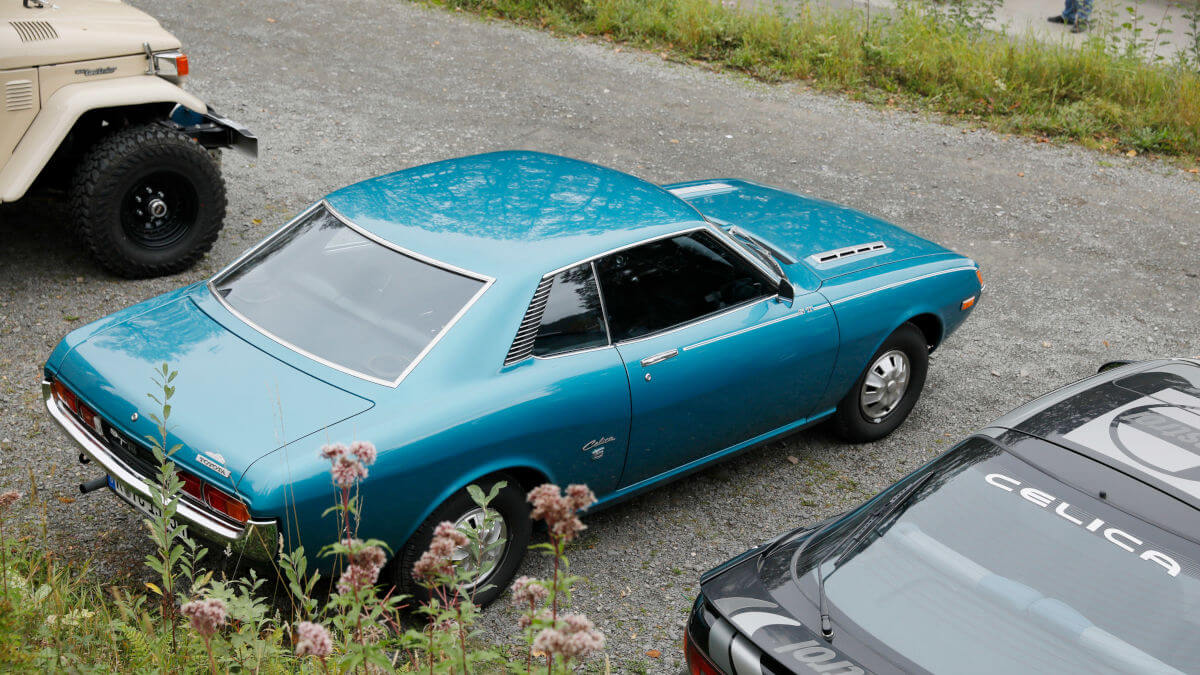















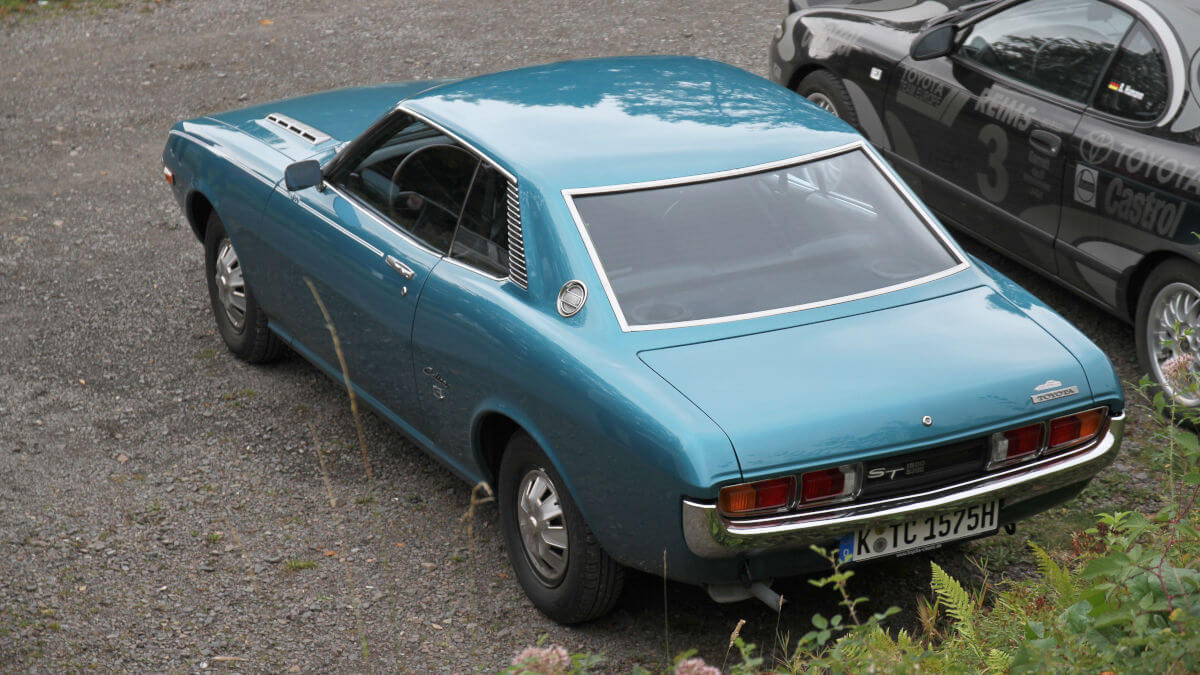



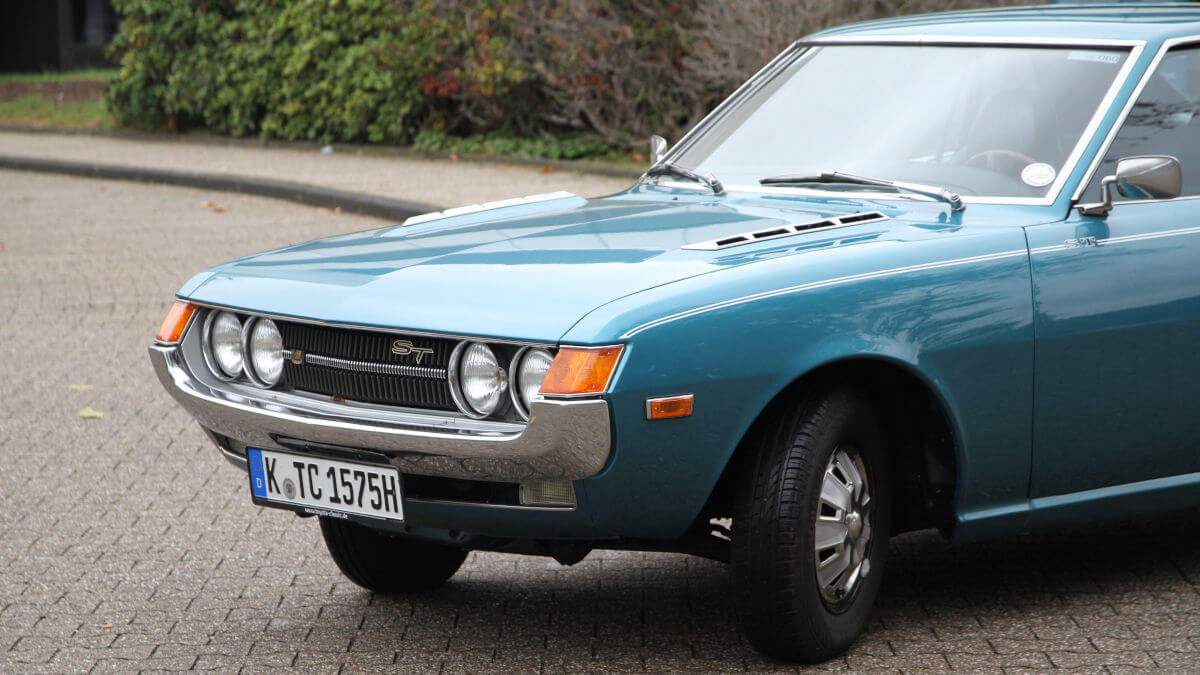











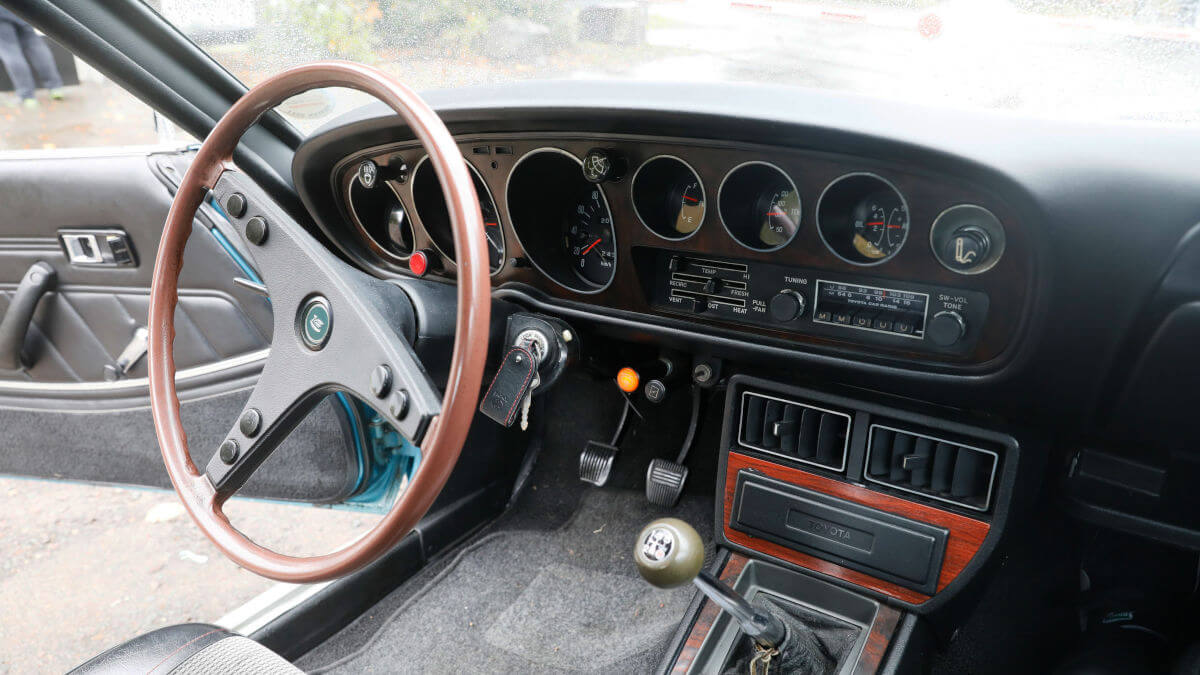







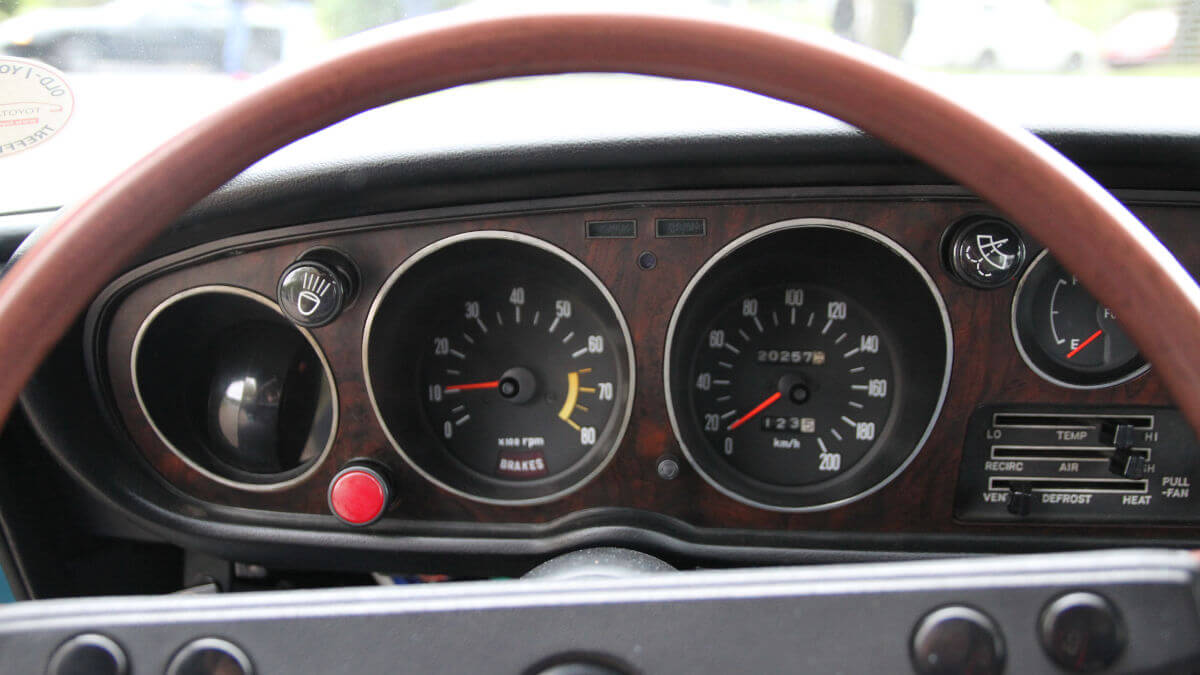











In addition to the version we drove with the indicated notchback, from 1976 the Celica was also available with a hatchback, which Toyota called ‘Liftback’. Drivers of the notchback version were able to completely roll down the front and rear side windows, while the B-pillars disappeared as well. So this is how you can get very close to the ‘heavenly’ part of the model name in good weather. Liftback owners couldn’t do so, as the rear side windows were installed into the bodywork. With the indicators placed at the front corners, the four round headlights and the chromed bumpers, the first Celica generation clearly reminds of American pony cars of the time. This made the car fit perfectly into the market, which was otherwise dominated by models such as the Capri or Mustang from Ford, the GT and Manta from Opel, the Fiat 124 Sport or the Datsun 240Z. Despite its relatively small engines, the Celica was also well received in the USA.
But enough about optics and technology. It is time to take a seat in the vehicle and take a look at the interior. Directly behind the three-spoke steering wheel with six small horn buttons and imitation wood on the rim are three large round instruments, next to which three somewhat smaller ones are arranged centrally in the dashboard. A little unusual from today’s point of view is the operation of headlights and windshield wipers by means of pull/rotary switches between the instruments. All other buttons and switches, however, don’t pose any riddle to the driver and so the journey can begin. Despite the autumn weather, we enjoyed the drive, which took us from Cologne Marsdorf to the southwestern Sauerland area and back. On the way, the Celica was able to prove its qualities on narrow paths, country roads and several Autobahn kilometers. It soon became clear that the 86 horsepower combined with 970 kilograms of weight were easily enough to keep up with today’s traffic and that the car never felt weak in the breeze.




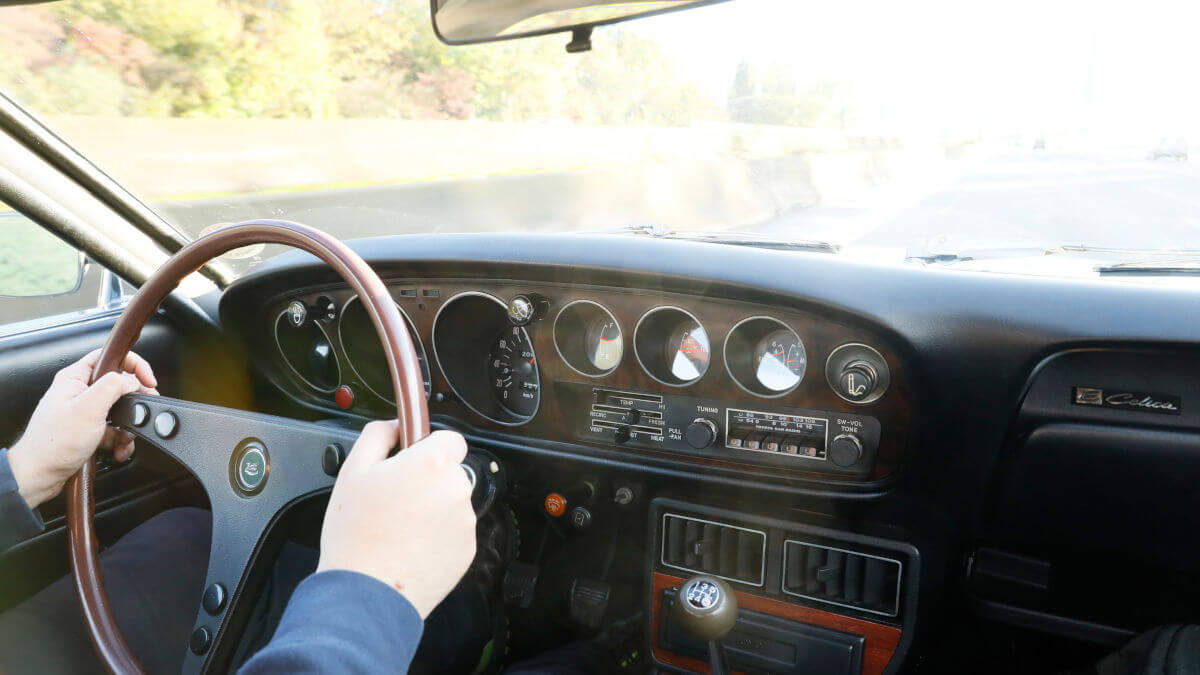











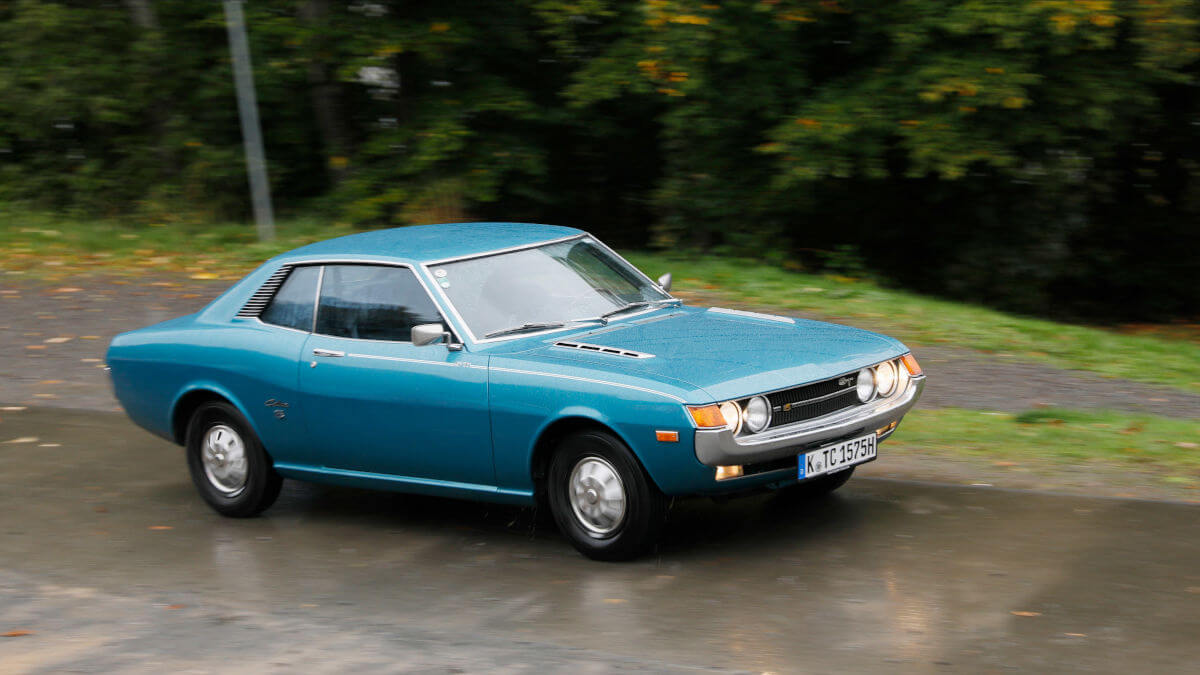



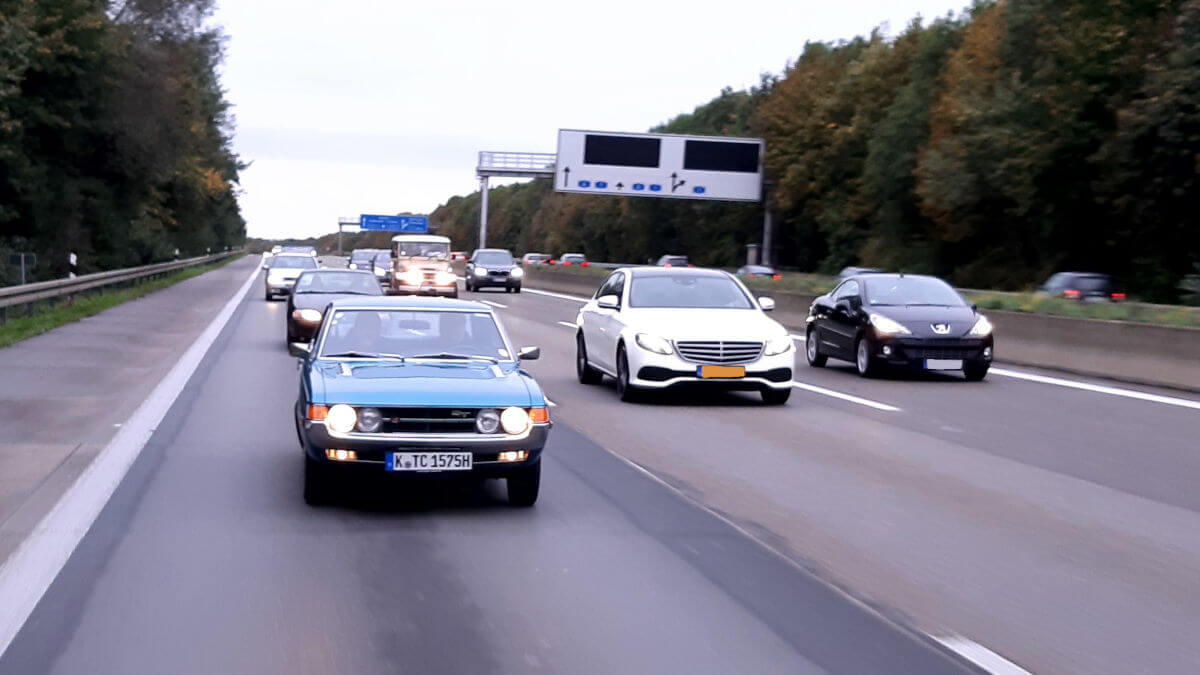















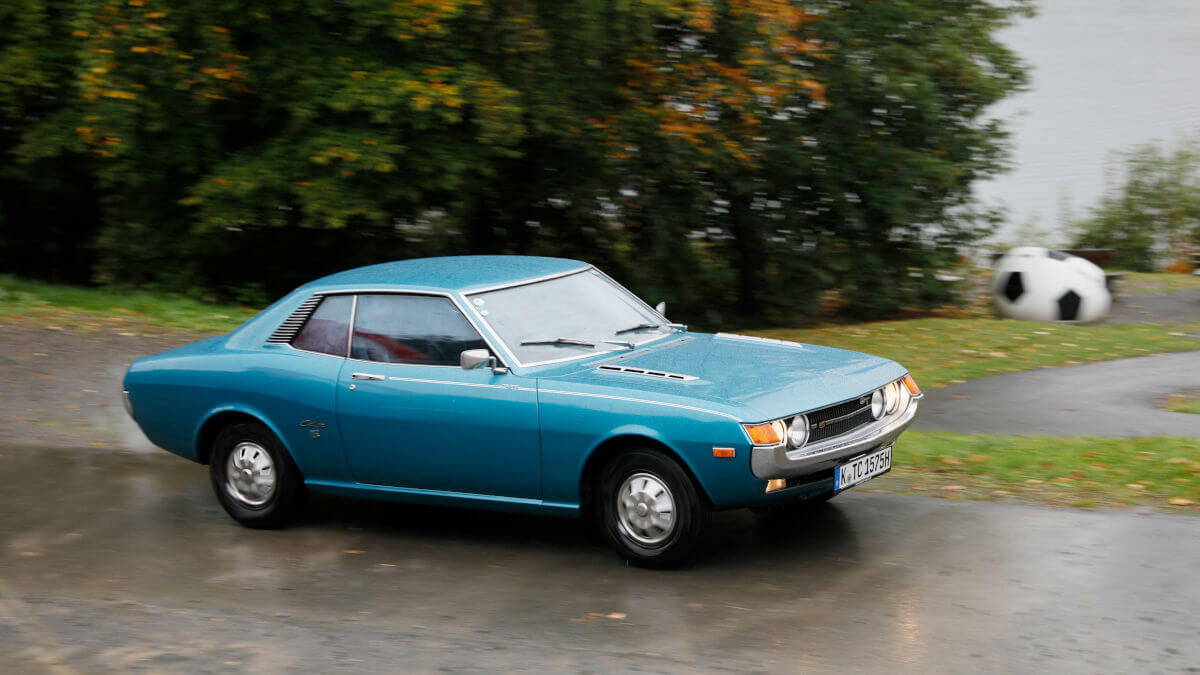







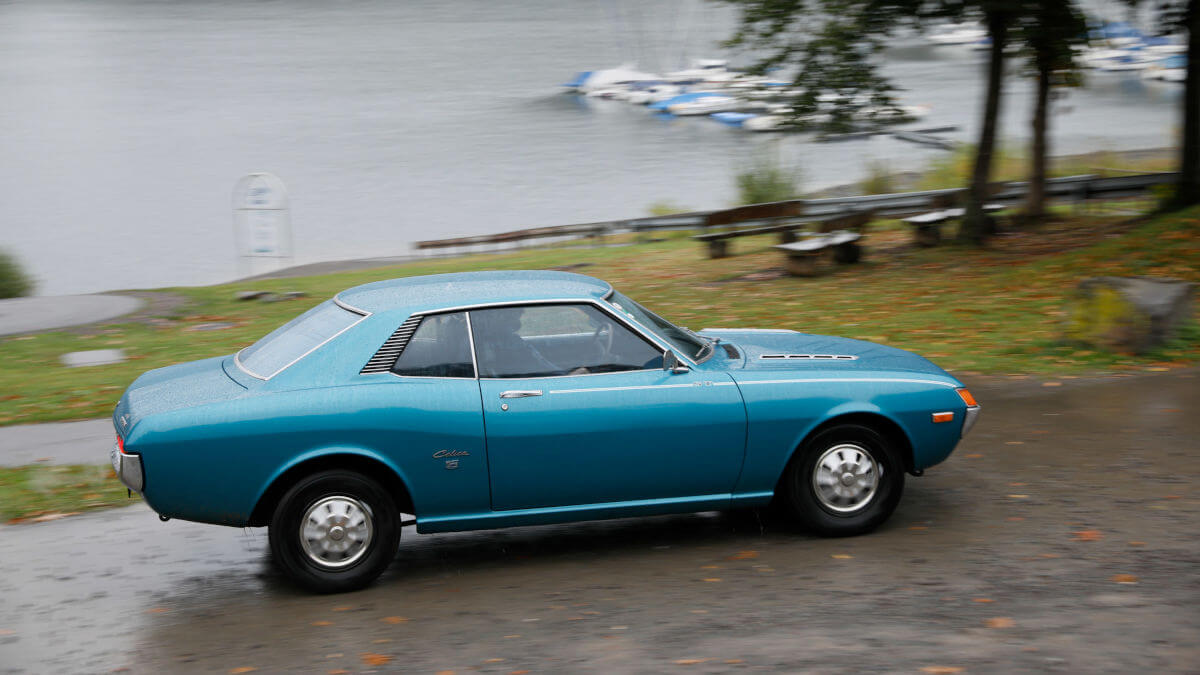







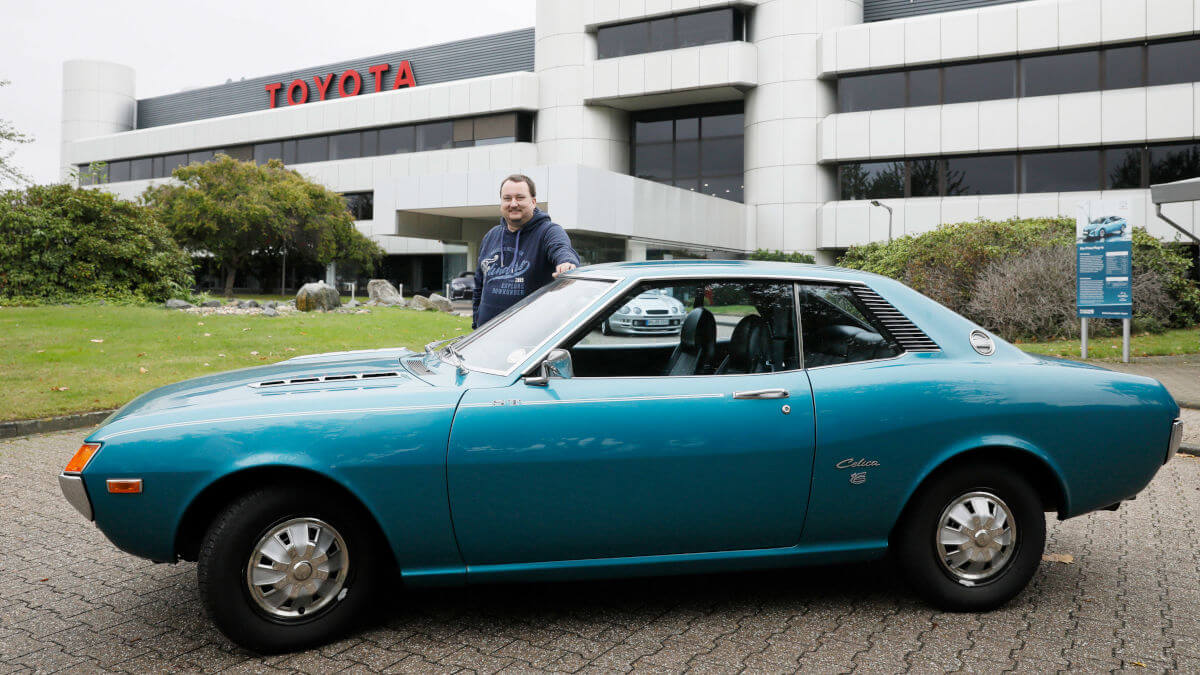



Only when you park the car between modern cars and get out of it does progress consciously catch the eye. The question arises as to why you should need more than the 4.17 meters length, 1.6 meters width and 1.3 meters height of the old Celica. Of course, the wheelbase of only 2.4 meters and the low roofline in the rear of the car don’t make for space miracles. But this has never been the development goal for sports coupés and is no different for today’s representatives of this genre. At the front, on the other hand, two passengers have enough space and can easily get in and out of the car thanks to the large doors. The trunk is also perfectly sized for excursions or weekly shopping, which makes a Celica TA22 suitable for everyday use even today.
After a total of about 300 kilometers, we finally reached the point in time that we had already dreaded during the day: The Celica stood dry under a carport of the Toyota Collection and the key had to be returned to the gate of Toyota Deutschland. Since this extensive test drive, however, the author of these lines keeps finding himself in the typical online car dealers, looking for well preserved Celicas. So even with only 86 hp, the ‘heavenly’ makes driving so much fun that even 50 years after its debut, the sports coupé is still considered to be supernatural.
Images: Toyota Collection, Jack Kulcke, Peter Sadtler, Matthias Kierse




